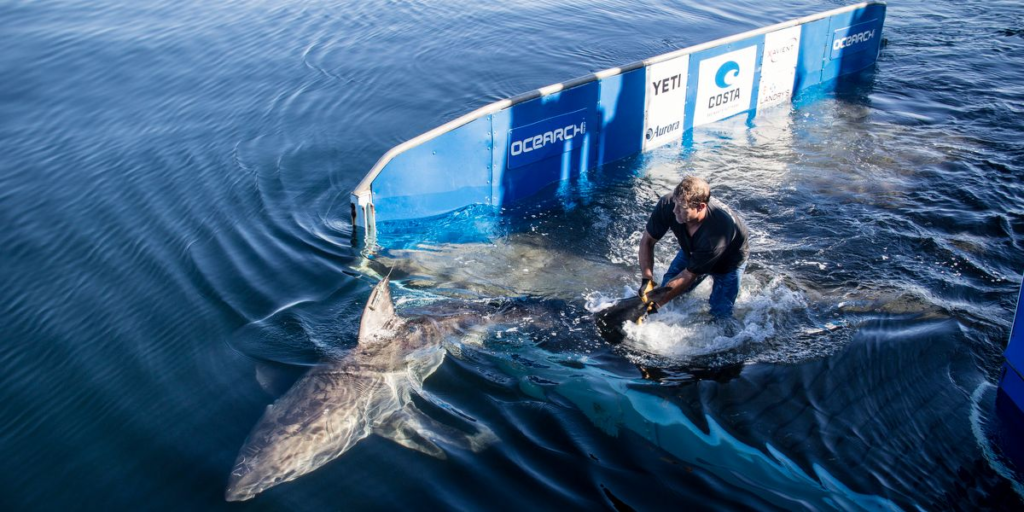Despite their essential function in marine ecosystems, they’ll be often misunderstood and feared. Shark watch, a time period used for tracking and looking at shark populations, have turned out to be an essential device for researchers, conservationists, or maybe most people. This tool involves the monitoring of shark species to acquire statistics on their movements, conduct, and interactions with ecosystems.
As shark populations face several threats due to human sports activities, tracking those creatures has won developing significance. With developing issues over shark conservation, the concept of “shark watch” has grown to be essential in efforts to guard those fascinating creatures.

The Importance of Shark Watch
They alter fish populations, stopping overpopulation and selling biodiversity. Unfortunately, shark populations had been unexpectedly declining because of overfishing, habitat destruction, and the worldwide call for shark fins. As a result, many shark species at the moment are listed as endangered or inclined.
Shark watches provide vital records that allow researchers and conservationists to understand the recognition of shark populations, their migratory patterns, and the way environmental modifications affect their conduct.
Shark Watch Programs: How They Work
Shark watch packages are typically initiated via marine research corporations, universities, and conservation groups. These programs use diverse tools and generations to expose sharks and music their moves.
1. Satellite Tracking
Satellite tagging is one of the most advanced and powerful strategies applied in shark watch packages. Scientists are a part of a small satellite tv for pc tv for pc tv for computer tag to a shark’s dorsal fin. This tag transmits real-time data, collectively with the shark’s place, depth, and temperature opportunities. Satellite tracking gives researchers precious records on shark migration patterns, feeding conduct, and motion amongst precise habitats.
2. Acoustic Tagging
Another approach utilized in this watch program is acoustic tagging. This approach entails attaching a small acoustic tag to a shark. The tag emits a completely particular sound frequency that is picked up with the useful resource of underwater receivers placed in particular areas. These receivers document statistics every time a tagged shark swims inside their variety. Acoustic tagging is specially useful for monitoring sharks especially coastal regions and information about their habitat options.
3. Citizen Science
Citizen technology is a few different essential details of this watch program. Through public participation, scientists can acquire treasured records from a large form of places. Citizen scientists, alongside recreational divers, fishermen, and beachgoers, document sightings of sharks to researchers. These sightings contribute to databases that record the abundance and distribution of sharks in the path of one-of-a-type areas.
You may like townhall news
Shark Watch and Conservation Efforts
The statistics collected through this watch program are used to inform conservation techniques aimed towards defensive shark populations. By records in which sharks live, how they migrate, and the threats they face, scientists can create more centered conservation tasks..
1. Marine Protected Areas (MPAs)
One of the key conservation strategies for sharks is the mounted order of Marine Protected Areas (MPAs). These areas are unique regions wherein human sports activities, along with fishing, are restrained or prohibited. MPAs offer secure havens for sharks to feed, breed, and develop without the threat of overfishing.

2. Shark Finning Bans
Shark finning, the exercise of getting rid of fins from sharks to be used in soup and other merchandise, is a first-rate contributor to the decline in shark populations. Many global locations have enacted shark finning bans that allow you to lower this adverse exercise.
3. Public Awareness Campaigns
Shark watch programs are also treasured in elevating public attention approximately the importance of sharks in marine ecosystems. By sharing actual-time information on shark moves, these applications can interact with the general public within the safety of these creatures. Many programs, together with the OCEARCH Shark Tracker, provide interactive systems wherein human beings can follow human sharks, find out about their conduct, and understand the challenges those animals face.
Shark Watch and the Role of Technology
Technology performs a vital function in the success of shark watch applications. Advances in GPS, satellite, and acoustic technology have made it viable to music sharks with extra accuracy and over longer distances. Real-time monitoring statistics permits researchers to examine sharks’ actions and behaviors in exquisite detail.
The Future of this Watch Programs
The destiny of shark watch applications appears promising as technology continues to enhance and international attention approximately the importance of sharks grows. With enhanced upgrades in tracking technology, researchers can be able to screen shark populations greater efficiently and comprehensively.
One area of destiny boom is the expansion of citizen generation efforts. As greater humans round the arena interact with shark conservation, the potential for data series and monitoring will increase exponentially. Apps and online platforms are assisting make shark watch participation less complex for the majority, further improving those applications’ attain and effectiveness.
Conclusion
Shark watch has grown to be an important tool within conservation and to take a look at sharks. By monitoring their movements and behaviors, researchers and conservationists gain beneficial insights that assist guard those essential marine animals. The function of generation, citizen technology, and public consciousness has extensively improved the effectiveness of shark watch packages. As shark populations hold to face numerous threats, shark watch applications remain a critical aspect in the ongoing effort to defend these charming creatures for destiny generations.
In the end, watches are extra than just a way to screen sharks; they represent a leap forward in our determination to marine conservation and the renovation of biodiversity. As we continue to analyze sharks, their conduct, and their desires, we are able to create a worldwide where sharks thrive and our oceans remain healthy.
Also read Bunkeralbum

